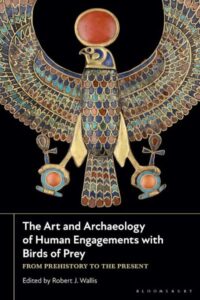 From the prehistoric past up to the present day, humans around the world have had a particular fascination with birds, and among the birds, birds of prey have commonly been among the most common upon which attention has been most closely focused. As anyone who has ever witnessed a falcon in full stoop, or the effect an eagle has upon all the other birds in a river delta when it lands among them, knows, the sheer power and domination of their environment exhibited by such birds can’t help but the arrest the attention of the observer. It’s no wonder so many people from so many cultures down through time have held these birds in high regard, even seeing them as messengers of the gods or even gods themselves.
From the prehistoric past up to the present day, humans around the world have had a particular fascination with birds, and among the birds, birds of prey have commonly been among the most common upon which attention has been most closely focused. As anyone who has ever witnessed a falcon in full stoop, or the effect an eagle has upon all the other birds in a river delta when it lands among them, knows, the sheer power and domination of their environment exhibited by such birds can’t help but the arrest the attention of the observer. It’s no wonder so many people from so many cultures down through time have held these birds in high regard, even seeing them as messengers of the gods or even gods themselves.
In The Art and Archaeology of Human Engagements with Birds of Prey; From Prehistory to the Present, being published this very month – 5 October, to be precise – from Bloomsbury, editor Dr. Robert J. Wallis has compiled a carefully chosen group of thirteen thoroughly researched and extensively referenced essays (this is an academic level book) by scholars renowned in a wide range of complementary subject areas across many different academic fields to present the reader with an overview of some of the particularly noteworthy ways humans have incorporated birds of prey into their religious, social, and artistic creations. Extensively illustrated with both black & white and color photographs as well as drawn illustrations, this is a book that should appeal greatly to all interested in how birds, specifically birds of prey, have been perceived and represented by our own ancestors.
Nota bene: s noted, the essays contained in this book are written at an academic level, however that should not deter seriously-minded readers interested in the subject from reading it.
